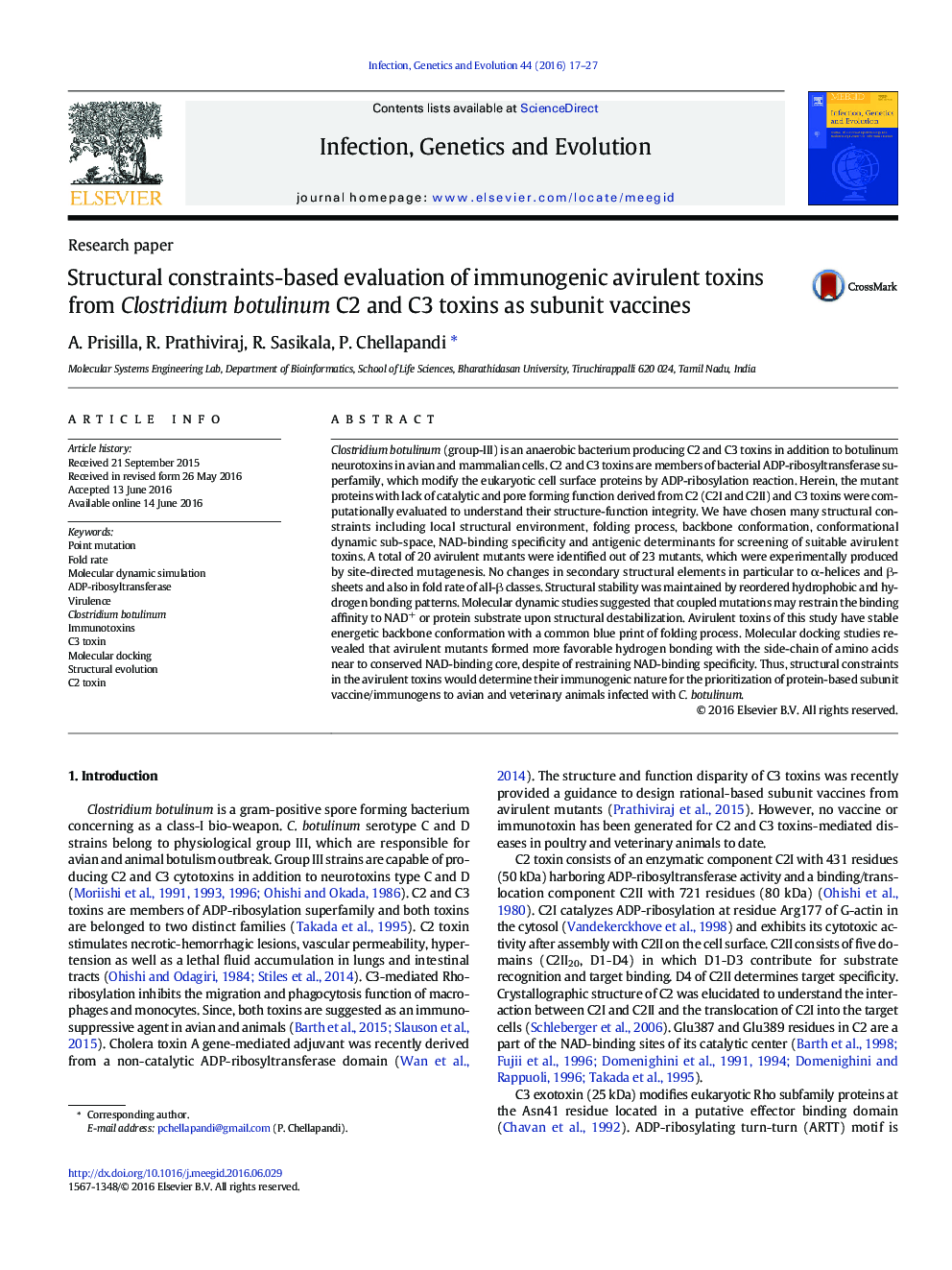| کد مقاله | کد نشریه | سال انتشار | مقاله انگلیسی | نسخه تمام متن |
|---|---|---|---|---|
| 5908108 | 1570159 | 2016 | 11 صفحه PDF | دانلود رایگان |

- Structural constraints in Clostridium botulinum C2 and C3 toxins and their mutants described.
- Hydrophobic and hydrogen bonding patterns determined structural stability of avirulent mutants.
- These mutants have stable backbone conformation with a common blue print of folding process
- We reported avirulent toxins as protein-based subunit vaccines/immunogens.
Clostridium botulinum (group-III) is an anaerobic bacterium producing C2 and C3 toxins in addition to botulinum neurotoxins in avian and mammalian cells. C2 and C3 toxins are members of bacterial ADP-ribosyltransferase superfamily, which modify the eukaryotic cell surface proteins by ADP-ribosylation reaction. Herein, the mutant proteins with lack of catalytic and pore forming function derived from C2 (C2I and C2II) and C3 toxins were computationally evaluated to understand their structure-function integrity. We have chosen many structural constraints including local structural environment, folding process, backbone conformation, conformational dynamic sub-space, NAD-binding specificity and antigenic determinants for screening of suitable avirulent toxins. A total of 20 avirulent mutants were identified out of 23 mutants, which were experimentally produced by site-directed mutagenesis. No changes in secondary structural elements in particular to α-helices and β-sheets and also in fold rate of all-β classes. Structural stability was maintained by reordered hydrophobic and hydrogen bonding patterns. Molecular dynamic studies suggested that coupled mutations may restrain the binding affinity to NAD+ or protein substrate upon structural destabilization. Avirulent toxins of this study have stable energetic backbone conformation with a common blue print of folding process. Molecular docking studies revealed that avirulent mutants formed more favorable hydrogen bonding with the side-chain of amino acids near to conserved NAD-binding core, despite of restraining NAD-binding specificity. Thus, structural constraints in the avirulent toxins would determine their immunogenic nature for the prioritization of protein-based subunit vaccine/immunogens to avian and veterinary animals infected with C. botulinum.
75
Journal: Infection, Genetics and Evolution - Volume 44, October 2016, Pages 17-27